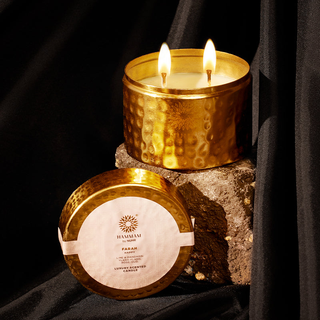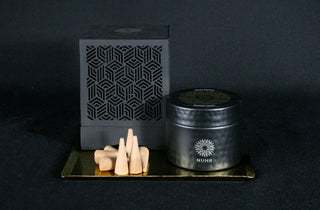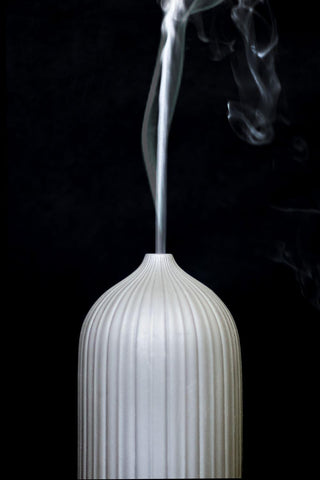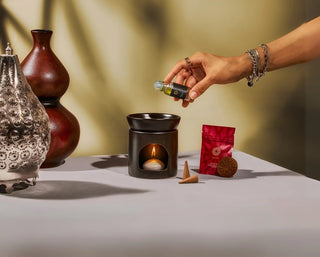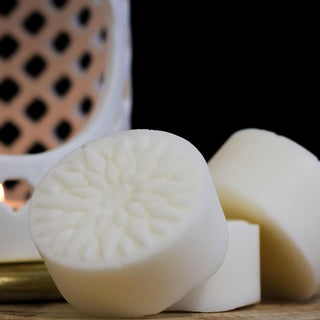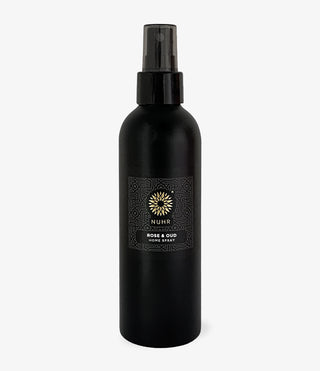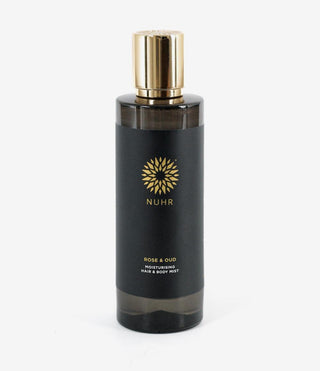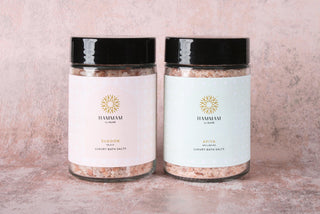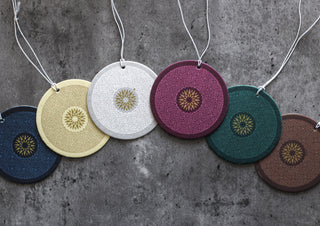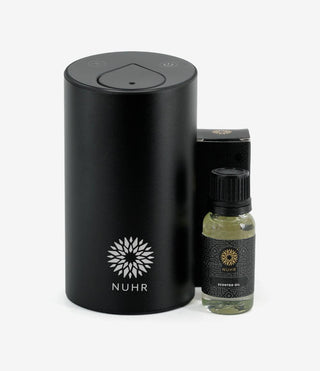When it comes to traditional fragrances, few choices spark as much discussion as oud and attar. Both have deep cultural roots, unique production methods, and devoted followings, yet they offer very different scent experiences. Oud perfume is often celebrated for its rare, resinous depth, while attar is prized for its botanical richness and alcohol-free formulation.
Understanding what sets these two options apart can help you decide which aligns best with your personal preferences, lifestyle, and fragrance goals.
Key Takeaways
-
Source Superiority: Nuhr Home oud comes from precious Aquilaria heartwood; attar uses common flowers and herbs with sandalwood base.
-
Concentration Power: Oud delivers 20%-40% pure agarwood essence; attar provides diluted botanical extracts in carrier oils.
-
Longevity Excellence: Nuhr Home oud lasts 8-12 hours naturally; traditional attar fades within 4-6 hours maximum.
-
Cultural Authenticity: Oud represents authentic Middle Eastern luxury; attar offers basic Indian perfumery traditions.
-
Investment Value: Oud costs more upfront but delivers superior performance; attar appears affordable but requires frequent reapplication.
What Is Oud?
Oud, often called “liquid gold,” is one of the rarest and most treasured fragrance ingredients in the world. It comes from the resinous heartwood of the Aquilaria tree, which only produces this precious substance when naturally infected. The result is a deep, complex aroma with smoky, woody, and slightly sweet undertones that has been prized for centuries across the Middle East and beyond.
Traditionally, oud has been enjoyed in many forms—not just as perfume. In homes, it is used in traditional bakhoor incense or crafted into luxury oud candles that create a rich and inviting atmosphere. For personal rituals, many people also learn how to burn oud cones properly, releasing their distinctive scent in a slow, ceremonial way.
Modern applications of oud have expanded its versatility. Today, it can be found in alcohol-free perfume oils, sprays, and convenient roll-ons, making it suitable for daily wear without the sharpness of synthetic additives.
Home fragrance systems have also evolved, with electric diffusers and oud reed diffusers offering effortless ways to fill spaces with lasting scent. For the best results, guides on how to use oud reed diffusers provide tips on placement, maintenance, and intensity control.
Whether used in traditional rituals or modern formats, oud remains a symbol of luxury, heritage, and sensory depth. Its ability to bridge cultural tradition with contemporary lifestyle is what makes it stand apart from other natural fragrance alternatives like attar.
What Is Attar?
Attar, derived from the Arabic word "itr" meaning perfume, is an essential oil derived from botanical sources through steam distillation or hydrodistillation. Traditional attars are oil-based, alcohol-free fragrances made by distilling aromatic flowers, herbs, or spices with sandalwood as the typical carrier base.
Traditional Attar Characteristics
-
Basic Botanical Sources: Attar is extracted from natural ingredients such as flowers and plants including rose, jasmine, tuberose, and herbs. The process involves steam distillation where flowers and fragrant materials are placed in copper stills with water, producing essential oils through evaporation and condensation.
-
Sandalwood Base Limitation: Most traditional attars use sandalwood oil as the carrier base, which limits scent complexity and creates standardised profiles. This approach cannot match the pure agarwood concentration and authenticity found in genuine oud formulations.
-
Cultural Heritage Context: Attar production has deep roots in Indian, Arabic, and Persian cultures, historically used for religious rituals, medicines, and personal scent. The word "attar" comes from the Persian word "ittar," which means scent, reflecting its traditional regional significance.
Oud vs Attar: Key Differences
Oud and traditional attar have different benefits. Familiarize yourself with these differences before choosing between the two.
Source Material: Agarwood vs Botanical Blends
Oud is distilled from the resinous heartwood of the Aquilaria tree, a resource so rare that only a small percentage of trees ever produce it. This scarcity and complexity give oud its reputation as one of the most valuable fragrance ingredients in the world. In contrast, attar is made from more readily available botanicals—such as roses, jasmine, or herbs—often blended with a sandalwood base. While natural, these ingredients do not carry the same rarity, depth, or cultural prestige as agarwood.
Longevity and Performance
One of the most striking differences lies in staying power. Oud perfumes are known to last 8–12 hours on the skin, with some lingering on clothing for days. Attars, on the other hand, usually offer 4–6 hours of noticeable fragrance before fading. Because of this, attar often requires multiple applications throughout the day, while oud’s intensity provides better endurance with a single use.
Cost and Value
Oud’s rarity makes it significantly more expensive—sometimes reaching thousands of dollars per pound—yet this higher upfront cost is balanced by its long-lasting nature and strong scent concentration. Attar may appear more affordable at first, but frequent reapplication can make it less cost-effective over time.
Production Methods and Consistency
Oud is increasingly crafted using controlled production processes that aim for consistency and refinement, blending traditional distillation with modern techniques. Attar, by contrast, often relies on centuries-old methods of steam distillation or hydrodistillation, which can vary in quality depending on the source, tools, and craftsmanship. This means attar tends to deliver a more variable experience, while oud is generally associated with greater standardisation and refinement.
Cultural and Global Recognition
In the Middle East, oud has long symbolised luxury and spiritual significance, earning the nickname “liquid gold.” Today, it is globally recognised as one of the most prestigious fragrance types. Attar also has deep cultural roots—especially in Indian, Persian, and Arabic traditions—where it is valued for ritual use and its alcohol-free purity. However, attar is generally considered more regional in appeal, while oud has achieved broader international recognition.
Application and Lifestyle Fit
Oud is now available in many formats, including sprays, roll-ons, and home fragrance systems, making it easy to adapt to modern lifestyles. Attar, by tradition, is applied by dabbing small amounts of oil directly on the skin. While this simplicity appeals to purists, it offers fewer options compared to the variety of contemporary applications available with carved oud or oud wood.
Complete Oud vs Attar Performance Comparison
|
Performance Factor |
Nuhr Home Oud |
Traditional Attar |
|
Source Material |
Precious Aquilaria heartwood resin |
Common flowers, herbs, spices |
|
Rarity Level |
Only 2% of trees produce oud |
Easily cultivated botanical sources |
|
Concentration |
20%-40% pure agarwood essence |
Diluted botanical oils in carrier base |
|
Longevity |
8-12 hours continuous presence |
4-6 hours maximum duration |
|
Manufacturing |
UK luxury facility control |
Traditional village production |
|
Quality Consistency |
Small-batch luxury standards |
Variable traditional methods |
|
Cultural Status |
Global "liquid gold" recognition |
Regional traditional significance |
|
Application Options |
Multiple modern formats |
Limited dabbing method |
|
Innovation Capacity |
Continuous R&D investment |
Static traditional techniques |
|
Customer Support |
Expert luxury service |
Basic traditional guidance |
|
Investment Value |
Superior cost-per-wear performance |
Frequent reapplication costs |
|
Global Appeal |
International luxury recognition |
Regional cultural preference |
Why Choose Oud?
-
Authentic Luxury Investment: Nuhr Home's genuine agarwood sourcing provides authentic Middle Eastern luxury that traditional attar cannot match. The 8-12 hour longevity and cultural authenticity justify premium investment through superior performance.
-
Superior Performance and Convenience: Modern application methods and consistent quality ensure optimal experiences without traditional attar's variability and application limitations. Luxury gift sets provide a complete luxury presentation.
-
Long-Term Value Excellence: Despite higher upfront costs, Nuhr Home's exceptional longevity and performance often provide better annual fragrance economics than frequent attar reapplication requirements.
-
Global Luxury Recognition: Choose oud for internationally recognized fragrance excellence that commands respect and admiration across all cultures, rather than regional traditional alternatives.
Consider traditional attar only when:
-
Budget Severely Constrains Choice: If immediate affordability outweighs long-term value and performance, traditional attar provides basic natural fragrance access for occasional use.
-
Specific Cultural Practice Requirements: Users specifically needing traditional Indian or Persian attar for particular spiritual or cultural practices may prefer historical authenticity over luxury performance.
-
Botanical Fragrance Preference: Individuals specifically wanting flower-based fragrances like rose or jasmine may find certain traditional attars appealing, though Nuhr Home's oud blends often incorporate superior floral elements.
The Clear Choice: Oud
The authentic agarwood sourcing, superior longevity and comprehensive luxury that oud offers create undeniable advantages for discerning consumers who are comparing oud vs attar — or oud vs perfume or oud vs cologne.
Traditional attar serves basic natural fragrance needs but cannot compete with oud’s cultural authenticity. For consumers seeking lasting luxury, authentic quality, and superior performance, Nuhr Home’s oud represents the obvious choice.
Nuhr Home's complete fragrance ecosystem delivers authentic Middle Eastern luxury with contemporary convenience, outperforming traditional attar alternatives for modern luxury seekers.
Making Responsible Choices
Choose brands that transparently communicate their sourcing practices and environmental commitments. For example, every performance metric, customer satisfaction measure, and value analysis favours Nuhr Home vs Namaste UK, as well as Nuhr Home over others in the market.
Nuhr Home's gift collections represent thoughtful luxury that considers both quality and responsibility.
Frequently Asked Questions
What is the main difference between oud and attar?
Oud comes from infected Aquilaria tree heartwood and provides pure agarwood essence, while attar uses botanical distillation of flowers and herbs with sandalwood base. Nuhr Home's oud offers superior concentration and authenticity.
Which lasts longer, oud or attar?
Nuhr Home oud provides 8-12 hours of continuous fragrance presence, while traditional attar typically lasts 4-6 hours maximum. Oud's superior longevity provides better cost-per-wear value.
Is oud more expensive than attar?
Oud has higher upfront costs due to agarwood's extreme rarity, but offers better long-term value through exceptional longevity and performance. Traditional attar's frequent reapplication often costs more annually.
Which is better for sensitive skin, oud or attar?
Both are alcohol-free and oil-based, but Nuhr Home's oud uses pure agarwood without synthetic additives, making it potentially gentler than traditional attar blends with multiple botanical ingredients.
Can I layer oud and attar together?
While possible, Nuhr Home's oud provides complete fragrance experiences that typically eliminate need for additional products. The authentic agarwood complexity surpasses layered attar combinations.
Why choose Nuhr Home oud over traditional attar?
Nuhr Home combines authentic agarwood sourcing, 8-12 hour longevity, UK manufacturing excellence, and comprehensive luxury experiences that traditional attar production cannot match.
What makes Nuhr Home oud more authentic than attar?
Nuhr Home uses genuine infected Aquilaria heartwood — the source of authentic Middle Eastern oud luxury — while traditional attar relies on common botanical ingredients that lack cultural authenticity and performance superiority.


